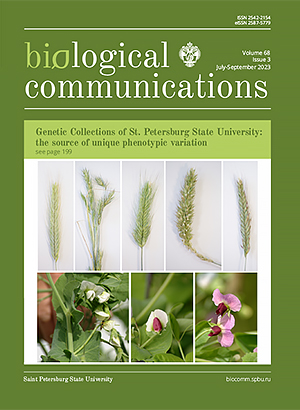Genetic Collections of St. Petersburg University
DOI:
https://doi.org/10.21638/spbu03.2023.308Abstract
Bioresource collections represent a unique source of biological diversity for research in genetics and related disciplines. The Department of Genetics and Biotechnology of St. Petersburg State University is the oldest department of genetics in Russia, founded in 1919. Throughout the entire period of development, the geneticists of St. Petersburg University have collected unique forms of plants, animals and microorganisms, on which their research was based. Many of these studies including regulation of translation termination in yeast, amyloids and prions of different organisms, genetic mapping of valuable morphological and biochemical traits to create first rye chromosome maps, and several aspects of transcription regulation in plants, had a significant novelty. The most active accumulation of collections of genetic resources at St. Petersburg State University started in the 1950-1970s when important scientific directions in the genetics of microorganisms, plants and animals, many of which continue today, were established at the department. Genetic collections are actively used in educational work for teaching dozens of educational courses. Currently, the interdisciplinary genetic collections of St. Petersburg State University consist of seven sections including genetic collections of rye, radish, garden pea, Chlamydomonas algae, Saccharomyces yeast and plasmids, Komagataella yeast, Drosophila fly. This review describes in detail the collections of the Department of Genetics and Biotechnology of St. Petersburg State University and discusses their current state, application and development prospects.
Keywords:
bioresource collections, genetic collections, yeast, rye, plasmid, Saccharomyces cerevisiae, Drosophila melanogaster, Komagataella phaffii, Secale cereale, Chlamydomonas reinhardtii, Raphanus sativus, Pisum sativum
Downloads
References
Downloads
Published
How to Cite
License
Articles of Biological Communications are open access distributed under the terms of the License Agreement with Saint Petersburg State University, which permits to the authors unrestricted distribution and self-archiving free of charge.





